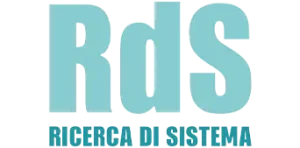Improving the operating conditions of the National Electrical System has a direct and significant impact on end-users, influencing both the stability of the network and energy costs. A considerable share of the costs associated with electricity consumption is linked to the activation of safety management services, which are essential to guarantee the reliability and resilience of the system. In this context, the optimal use of new distributed resources, in particular electrochemical SdA, represents a strategic turning point, allowing a potential reduction in a series of investments on the network and a consequent optimization of the reserve supply costs. This occurs thanks to a greater range of resource options to be activated, which improve the flexibility and efficiency of the national electric system.
In the medium term, the implementation of these innovative solutions will lead to a reduction in system dispatching costs, resulting in lower energy expenditure for each individual end user. This reduction in costs will not only improve the economic competitiveness of businesses and families, but will also contribute to making the energy system more sustainable and less dependent on fossil fuels.
An additional economic benefit that can be glimpsed for the end user is the possibility of active participation in the safe management of the system. This means that users, through the integration of smart technologies and their interaction with energy management platforms, will be able to directly benefit from the profits deriving from the remuneration of new services, such as synthetic inertia, fast reserve and peak shaving/load levelling. These services allow for a more effective balance between supply and demand, reducing the need for emergency interventions and promoting a more equitable distribution of costs and benefits within the system.

Furthermore, an overall reduction in energy costs and a greater exploitation of the economic benefits deriving from the possibility of full use of IAFR (Renewable Energy Powered Plants) will have a significant impact on the accessibility of energy services. Ensuring affordable and reliable energy is one of the fundamental challenges in combating the phenomenon of energy poverty, which does not only concern developing countries, but also industrialized countries such as Italy. In 2016, in fact, it was estimated that over 2.2 million Italian families were in conditions of energy poverty, equal to 8.6% of all families. Targeted interventions and incentive policies can help reduce this gap, improving access to energy and ensuring greater equity in its use
Social impact
Another aspect of primary importance concerns the social impact of these innovations. An increase in the safety and stability of the electrical system ultimately leads to a tangible improvement in the quality of life of end-users, reducing the risk of blackouts, lowering emergency management costs and ensuring a continuous and reliable supply of electricity
Finally, research and innovation in the sector could encourage the creation of new highly specialized professional figures. Interaction with the ViSto platform, for example, could lead to the training of market operators capable of offering advanced services to network operators, thus improving the integration of renewable energy and the overall management of the electricity grid. The development of specific skills in this area could open up new employment opportunities, contributing to the growth of a more efficient, technologically advanced and sustainable energy ecosystem


